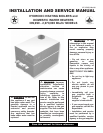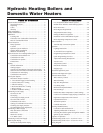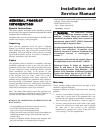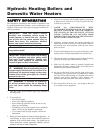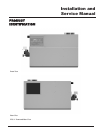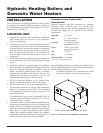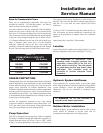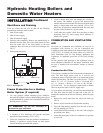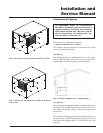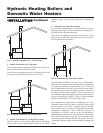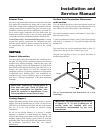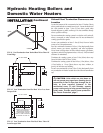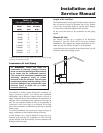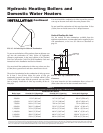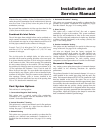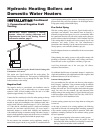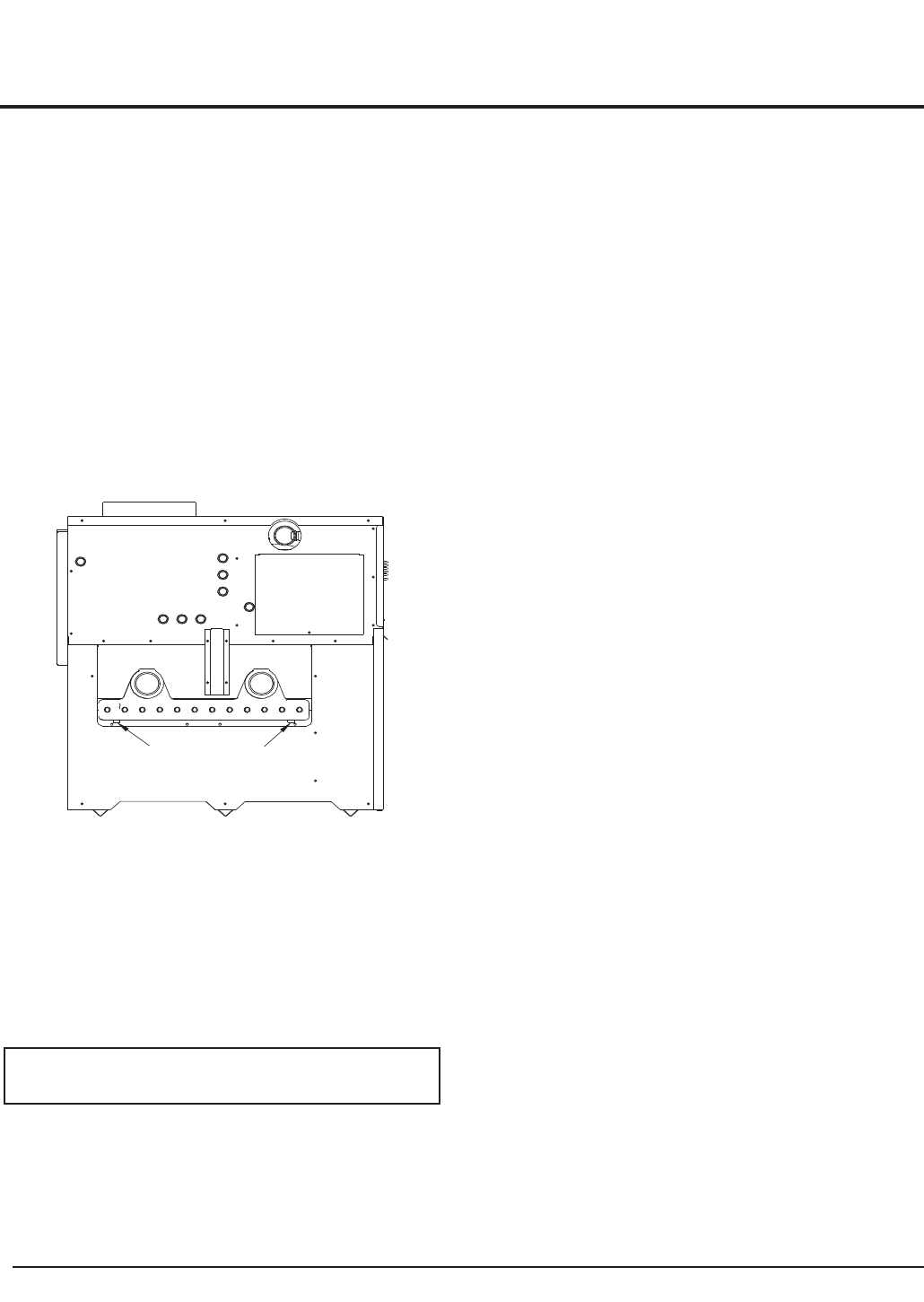
Hydronic Heating Boilers and
Domestic Water Heaters
8
INSTALLATION
Continued
Shut-Down and Draining
If for any reason, the unit is to be shut off, the following
precautionary measures must be taken:
1. Shut off gas supply.
2. Shut off water supply.
3. Shut off electrical supply.
4. Drain the unit completely. Remove one threaded plug or
bulbwell from the inlet side of the front header and one
from the outlet side of the front header on the heat
exchanger. Blow all water out of the heat exchanger (see
FIG. 3).
5. Drain pump and piping.
FIG. 3 Draining Unit
Freeze Protection for a Heating
Boiler System (if required)
1. Use only properly diluted inhibited glycol antifreeze
designed for hydronic systems. Inhibited propylene glycol
is recommended for systems where incidental contact with
drinking water is possible.
2. A solution of 50% antifreeze will provide maximum
protection of approximately -30°F (-34°C).
3. Follow the instructions from the antifreeze manufacturer.
Quantity of antifreeze required based on total system
volume including expansion tank volume.
4. Glycol is denser than water and changes the viscosity of
the system. The addition of glycol will decrease heat
transfer and increase frictional loss in the boiler and related
piping. A larger pump with more capacity (15% to 25%
more) may be required to maintain desired flow rates and
prevent a noise problem in a glycol system.
5. Local codes may require a back flow preventer or actual
disconnect from city water supply when antifreeze is
added to the system.
COMBUSTION AND VENTILATION
AIR
Provisions for combustion and ventilation air must be in
accordance with Section 5.3, Air for Combustion and
Ventilation, of the latest edition of the National Fuel Gas Code,
ANSI Z223.1, in Canada, the latest edition of CAN/CGA-
B149 Installation Code for Gas Burning Appliances and
Equipment, or applicable provisions of the local building
codes.
Provide properly-sized openings to the equipment room to
assure adequate combustion air and proper ventilation when
the unit is installed with conventional venting or sidewall
venting.
Combustion Air Filter
This unit has a standard air filter located at the combustion air
inlet. This filter helps ensure clean air is used for the
combustion process. Check this filter every month and replace
when it becomes dirty. The filter size on the 399,999 - 750,000
units is 12" x 12" x 1" (30.5cm x 30.5cm x 2.5cm) and 16" x
16" x 1 (40.6cm x 40.6cm x 2.5 cm) on the 990,000 -
2,070,000 units. You can find these commercially available
filters at any home center or HVAC supply store.
For convenience and flexibility, you can direct the combustion
air inlet from either the back or right side of the unit. To
arrange the combustion air inlet for side entry, follow the steps
below:
1. Remove the metal panel from the unit’s side wall (see
FIG. 4).
2. Remove screws from the air filter/bracket assembly.
3. Move the filter/bracket assembly from the rear of unit to
the side opening (see FIG. 5).
4. Attach filter/bracket assembly to the unit’s side using the
pre-drilled screw holes.
5. Attach the metal panel to the rear combustion air opening
to seal it off.
ƽ WARNING: Do not use undiluted or
automotive type antifreeze.
DRAIN PLUG
DRAIN PLUG



